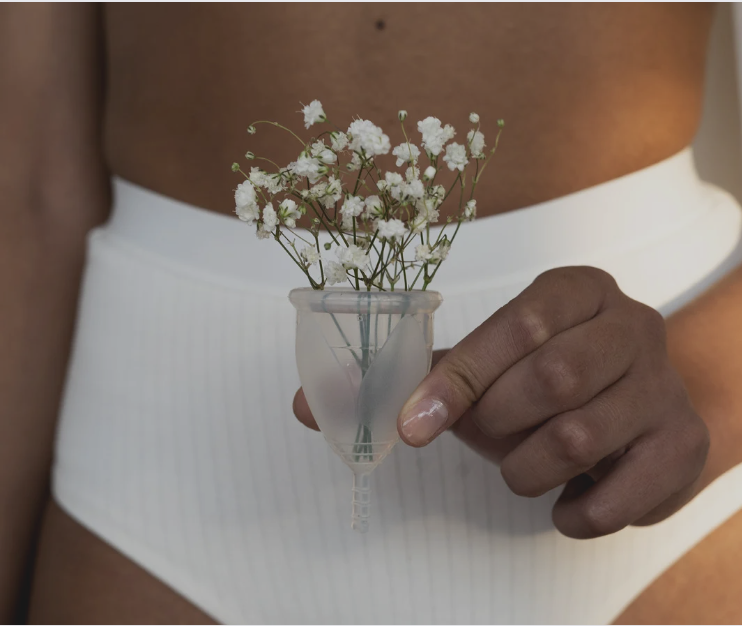If you know you know. Those aching lower belly pains that often tell our body, “hey, flow is coming to town” can take on the strongest of warriors. But it doesn’t need to be like this. Believe it or not, there are lifestyle measures you can take to help relieve menstrual cramps, prevent them from happening in the first place, and support your overall health. This article will break it down.
First Thing’s First – What Is Going On Down There?
Menstrual cramps are often caused by an overproduction of inflammatory chemicals called prostaglandins.
When we hear the word “inflammation,” I think many of us immediately assume something must be wrong – but we actually need these little guys! Prostaglandins trigger the muscles of the uterus, causing those oscillating contractions that help to move the uterine lining out, causing a period.
But when our body produces too many prostaglandins, those contractions can get intense, and it can cause very real pain, from lower back aches to menstrual cramps.
So Why Am I Producing Too Many Prostaglandins?
It can be due to several different factors.
One cause is excess estrogen. When we have too much estrogen in the body, it produces a thicker uterine lining. This thicker lining requires more prostaglandins to help move it out. Plus, estrogen is also the main hormone that triggers prostaglandin production. So more estrogen, means a thicker lining, more prostaglandins, more cramping, and usually, heavier periods.
Excess estrogen, or estrogen dominance, can be due to an array of biological and environmental issues, from endometriosis and thyroid issues, to endocrine disruptors like plastics and cosmetic ingredients.
The other common trigger of increased cramping is a high-inflammatory diet. When we consume inflammatory foods, such as refined carbohydrates, omega-6 heavy oils and processed meat, it can also boost inflammation and intensify those menstrual cramps.
While there are other potential causes of a painful period, known as dysmenorrhea, high estrogen levels and an inflammatory lifestyle may be the top contributors.

What Level of Pain Is Considered Normal During Your Period?
Let’s be clear – your period shouldn’t be “painful.” Discomfort is normal – gut wrenching pain is not.
“Normal” period pain will start right before or during your period, and may last up to 3-4 days. It’s common to feel a a bit crampy and achy, and this is usually not due to an underlying medical condition.
If your cramps are also accompanied by nausea, vomiting, dizziness or backaches, you might have what is considered primary dysmenorrhea, a condition that describes painful periods. If this is what you are facing each month, the following tips may help.
However, if you’re feeling…
- pain with intercourse
- pain with bowel movements or urination
- pain throughout your cycle
or anything else that feels “off” to you, please speak with your doctor.
I’m Feeling the Feels – Why Shouldn’t I Just Pop an Advil?
Well you certainly can! But it will not solve the root problem of your menstrual cramps.
In our day and age, when we feel pain our first instinct is to turn to the quick fix. Advil, Tylenol, and Aspirin have quickly become the modern woman’s best friend – and I get it! When those cramps hit and you have a day full of meetings, daycare, appointments, and whatever else you are juggling, numbing that pain can feel like one of the only ways through.
But here’s the issue – NSAIDs, like Aspirin and Advil, have been linked to heart attacks and gastric complications like ulcers, with some preliminary research even pointing to impacts on fertility. And acetaminophen, like Tylenol, is one of the leading causes of liver failure.
But even more so than that, those pain relieving pills are just covering up the pain. While menstrual cramps are unpleasant, they’re your body’s way of saying, “hey something is up! Pay attention to me.” When we take a quick-fix medicine, we may ignore our body’s messaging and cut off our communication with our cycle.
Now, there are time whens these pills can come in handy, like when you’re about to go into a big event, such as a wedding or a business presentation. The point here is not to say that they’re a “never,” but rather try and shift the view to see them as an “in case of emergencies.”
So rather than jumping for the band aid solution – which will impact your health in other ways later on – focus on addressing the root cause, and make lifestyle changes that support your cycle.
So What Should I Do For Menstrual Cramps Instead?
There are measures you can take to both prevent menstrual cramps from coming on and to relieve pain when they do. In general, cycle syncing, or practicing a lifestyle that supports all the stages of your cycle, will be key, but when in doubt, these are safe and easy tips you can turn to.
Leading up to your period:
Choose cruciferous veggies:
Cruciferous vegetables like cabbage, broccoli, cauliflower, and kale can work wonders. Not only are they rich in antioxidants, but they also help to weaken estrogen due to DIM, a phytonutrient in veggies like broccoli that plays a critical role in hormone balance.
Load up on fiber:
Fiber rich foods, like whole grains, seeds, and vegetables, help to bind to estrogen and remove it from the body. Making sure you “go” regularly will be key in maintaining healthy estrogen levels, and fiber is the friend that will help get you there.
Enjoy omega-3 rich foods:
Foods like walnuts, chia seeds, ground flaxseeds, avocados, and cold water fatty fish, like salmon, are high in omega-3 fatty acids. These fats help to lower inflammation, and can reduce menstrual pain. You can also consider taking an omega-3 supplement from a high quality fish oil source or an algae supplement.
Eat a low inflammatory diet:
Load up on fruits, vegetables, whole grains, and lean high quality proteins like legumes, fish, and eggs. On the other hand, limit inflammatory foods, like dairy, alcohol, caffeine, refined carbohydrates and red meat. While each person will respond differently, these are the general culprits.
Limit Endocrine Disruptors:
Since EDC’s can mess with our hormones (especially estrogen) and lead to heavier, more crampy periods, it’s important to try and limit your exposure. One of the first ways I recommend doing this is through your fork – source your food ethically, responsibly, and mindfully. Want to understand more about the EDC and food connection? Check out this article here.
Prioritize zinc:
Zinc has been shown to inhibit the metabolism of prostaglandins, making a big difference in easing the onset of menstrual cramps. Consuming even 30 mg of zinc daily in the week leading up to your period can make a big difference, which is about the equivalent of 5-6 oysters. You may consider taking a zinc supplement, but always talk to a doctor or dietitian first.
On Your Period:
Make ginger tea:
From nausea to indigestion, ginger can do wonders for PMS in general. Ginger contains a compound that helps to inhibit the production of prostaglandins, thus easing period pain. Ginger is generally considered safe, but always talk to your doctor or dietitian before introducing herbs.
Go for magnesium:
Magnesium is a mineral that helps to relax muscles. So if you’re dealing with the oscillating waves of uterine contractions, magnesium can help to relax the smooth muscle of your uterus and calm those cramps. Opt for magnesium bisglycinate, or, if you’re dealing with constipation during your cycle, try magnesium citrate.
Take a warm bath:
When in doubt, go back to the basics. Use a hot water bottle, or draw a warm bath for some extra relief. Add a few drops of lavender for a little extra relaxation or add some epsom salt (aka magnesium sulfate) to ease muscle cramps.
Get moving:
Yoga or light exercise can also help to relieve menstrual pain. By calming the nervous system and stimulating the body’s release of its natural painkillers, like endorphins, can help to reduce period pain
Consider Cramp Bark:
The name is pretty self explanatory. Cramp bark is an herb that has a long history of being used to treat menstrual pain. However, as with all supplements and herbs, always talk to your doctor and/or dietitian before beginning something new.
Need some more individual help? Book a consultation call here.
Not intended to replace medical advice – for educational purposes only.
Written By: Amanda Wahlstedt, RDN

share this post >>
share this post >>